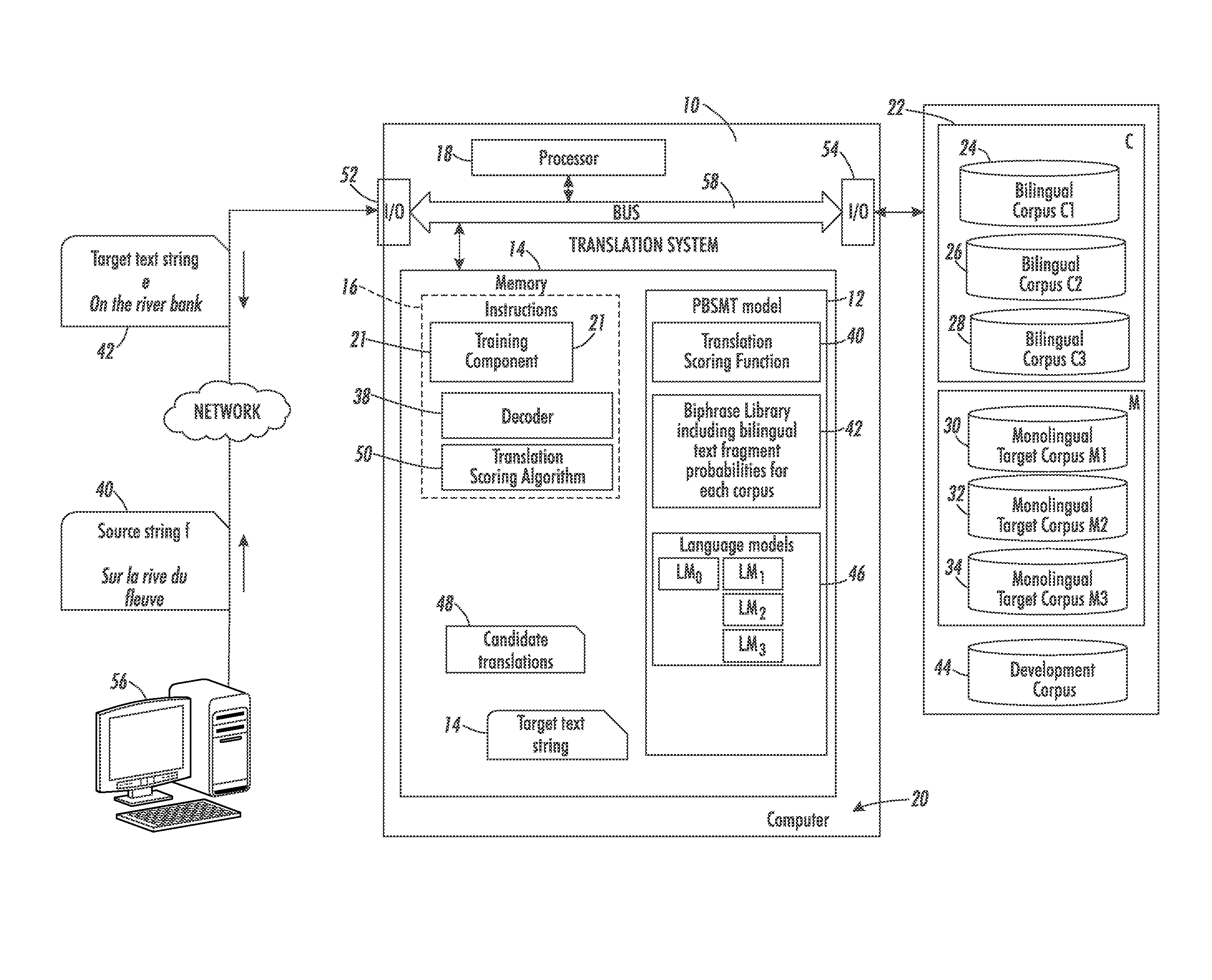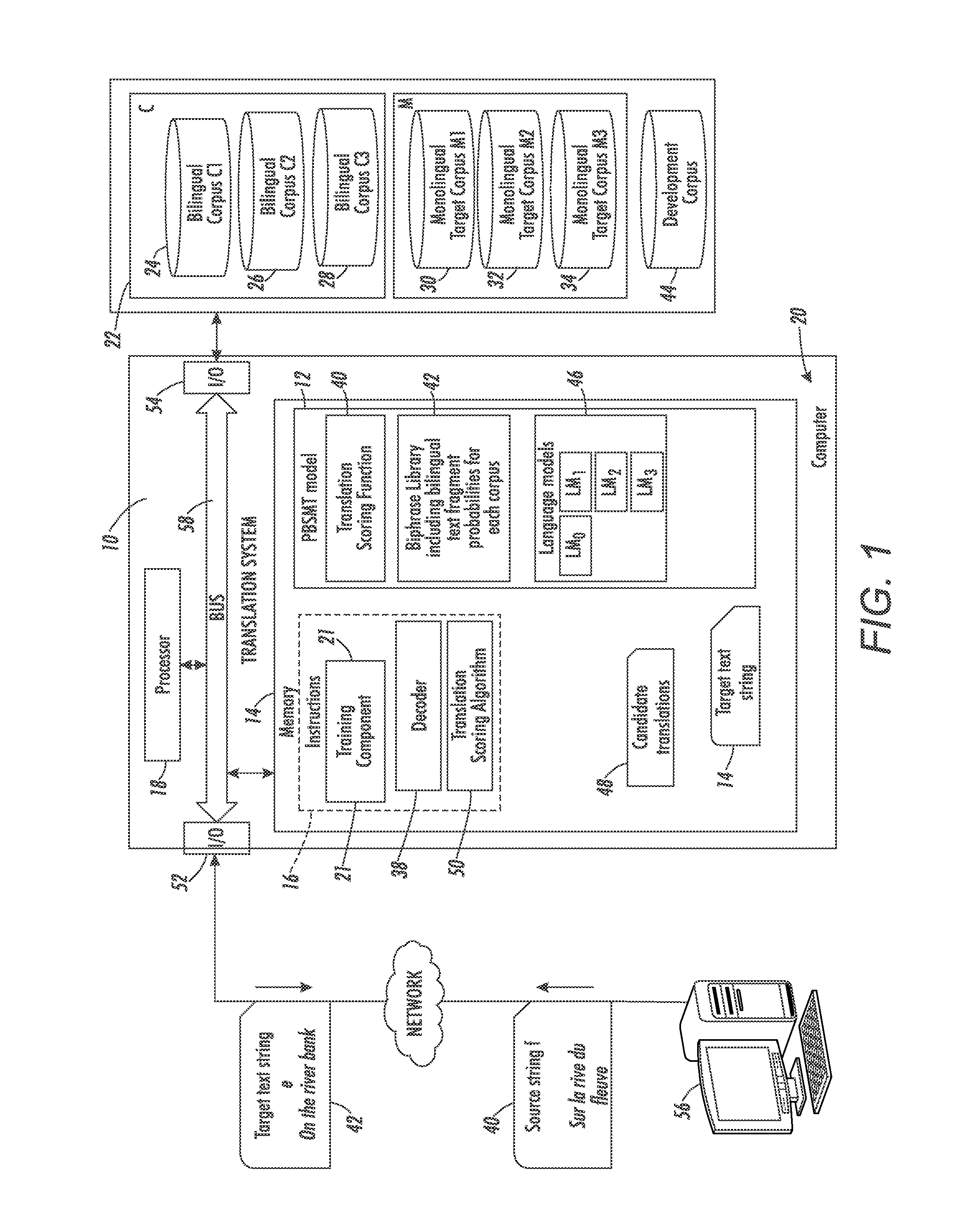Multi-domain machine translation model adaptation
a machine translation model and multi-domain technology, applied in the field of statistical machine translation, can solve the problems of their translations for training an smt model, time-consuming and expensive, and inability to train a large-enough corpus of documents
- Summary
- Abstract
- Description
- Claims
- Application Information
AI Technical Summary
Benefits of technology
Problems solved by technology
Method used
Image
Examples
examples
[0088]In order to evaluate the method empirically, a combined training corpus was compiled which consists of six distinct collections of bilingual training data between English and French, differing substantially in style and genre. The collections include content from:
[0089]1. Europarl: (Koehn, 2005),
[0090]2. JRC-Acquis (see, Steinberger, et al., “The JRC-Acquis: A multilingual aligned parallel corpus with 20+ languages,”Proc. 5th Intern'l Conf. on Language Resources and Evaluation (LREC 2006).
[0091]3. WIT-3 (see, Cettolo, et al., “WIT3: Web Inventory of Transcribed and Translated Talks,”Proc. 16th Conf. of the European Association for Machine Translation (EAMT 2012), pp. 261-268).
[0092]4. 2011 WMT-Newstext (see, Callison-Burch, C., et al., “Findings of the 2011 Workshop on Statistical Machine Translation,”Proc. Sixth Workshop on Statistical Machine Translation, pp. 22-64 (2011))
[0093]5. COSMAT corpora (see, Lambert, et al., “Collaborative Machine Translation Service for Scientific...
PUM
 Login to View More
Login to View More Abstract
Description
Claims
Application Information
 Login to View More
Login to View More - R&D
- Intellectual Property
- Life Sciences
- Materials
- Tech Scout
- Unparalleled Data Quality
- Higher Quality Content
- 60% Fewer Hallucinations
Browse by: Latest US Patents, China's latest patents, Technical Efficacy Thesaurus, Application Domain, Technology Topic, Popular Technical Reports.
© 2025 PatSnap. All rights reserved.Legal|Privacy policy|Modern Slavery Act Transparency Statement|Sitemap|About US| Contact US: help@patsnap.com



